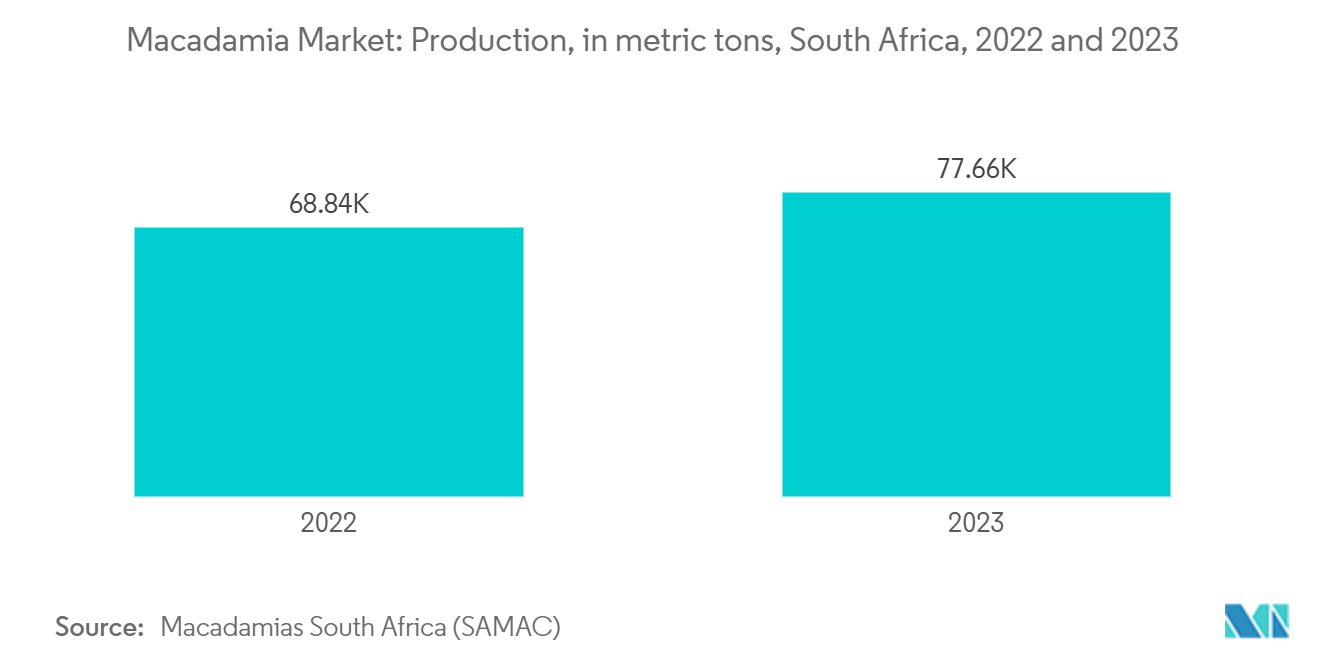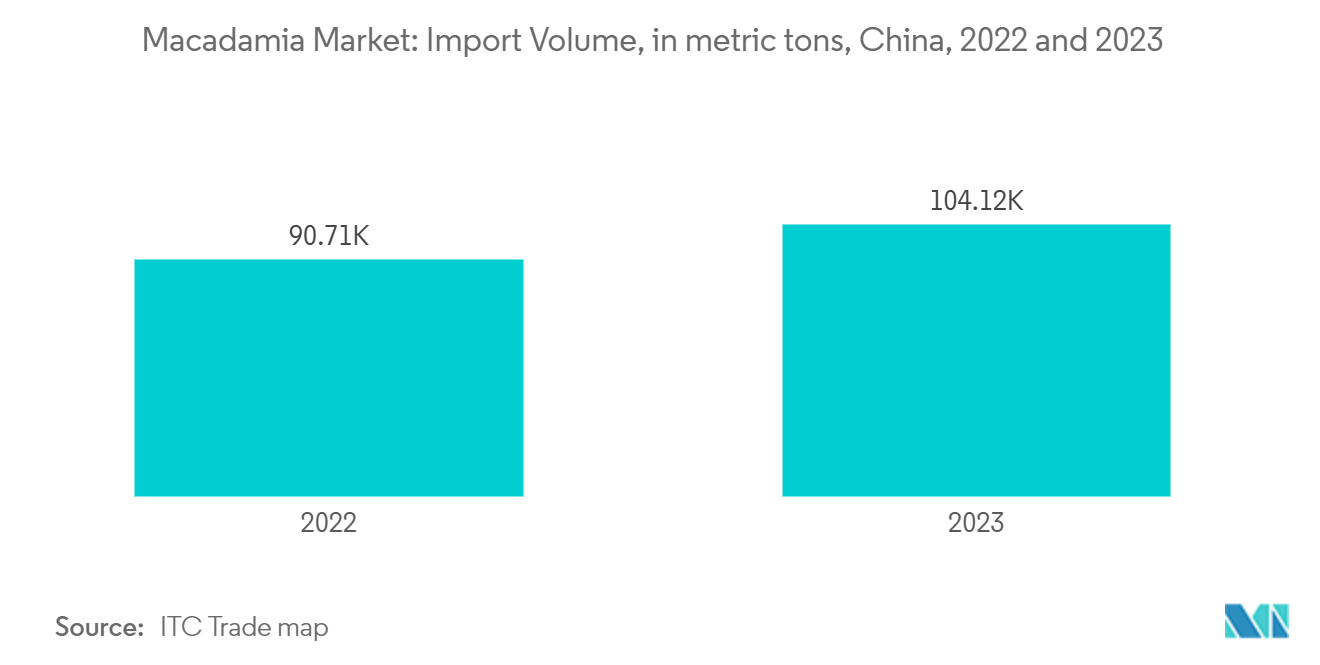Market Trends of Macadamia Industry
High Production in Africa Supports the Market
Africa, especially in nations like South Africa, Kenya, and Malawi, boasts a climate conducive to macadamia cultivation. Macadamia trees flourish in regions with well-drained, fertile soils and moderate temperatures. Such conditions are prevalent in parts of Africa, particularly at higher altitudes with adequate rainfall. Furthermore, African nations have ramped up investments in agriculture, viewing macadamia farming as a lucrative venture. Both governments and private entities are backing this initiative, offering funding, research, and market access to bolster macadamia nut production. For example, data from Macadamias South Africa (SAMAC) indicates that the country's macadamia nut production hit 77,659 metric tons in 2023, marking a 12.8% rise from 2022.
Additionally, African countries enjoy robust access to international markets, especially in Asia, Europe, and North America, where macadamia demand is high. The region's closeness to major shipping routes further streamlines trade, bolstering production growth. In Kenya, supportive government policies and export initiatives have catalyzed a rapid expansion of macadamia farming over the past few decades. A notable 2023 decision by the Kenyan government allowed producers to export unprocessed macadamia nuts. This move bore fruit, with traders, processors, and growers reporting over 1,000 metric tons of unprocessed nuts exported to Asia by January 2024.
Moreover, as international demand for macadamia nuts surges, many smallholder farmers in Africa are pivoting to macadamia cultivation, drawn by the promise of higher returns and institutional support. In South Africa, the Southern African Macadamia Growers Association (SAMAC) allocates 20% of the grower levy for training, workshops, and equipment. Thus, the combination of favorable growing conditions, supportive initiatives, and trade opportunities is propelling the macadamia market in Africa during the forecast period.

Asia Pacific's Rising Imports Signal Growing Consumption
The Asia-Pacific region has become a major importer of macadamia nuts due to economic growth, dietary trends, and a growing appreciation for healthy foods. As awareness of healthy eating spreads, consumers increasingly seek nutritious snacks. Macadamia nuts, known for their heart-healthy fats and antioxidants, align with this demand for wholesome, plant-based foods. They are used in various dishes and as snacks. Market promotions also drive demand and imports. The World Macadamia Organisation in China launched its first Consumer Marketing Campaign in 2022, showcasing the tradition of cracking nut-in-shell macadamias during Chinese festivals like the Chinese New Year.
In Japan, South Korea, and China, macadamia nuts are used in confectioneries, baked goods, cooking oils, and local dishes. As these nuts integrate into regional cuisines, demand grows, making it primarily met through imports. According to ITC Trademap, China imported 104,116 metric tons of macadamia nuts in 2023, up from 90,712 metric tons the previous year.
The Asia-Pacific's growing food and beverage (F&B) industry, with its demand for high-quality ingredients, further boosts macadamia nut imports. These nuts are essential in sectors like confectionery, snacks, dairy products, and plant-based foods. Manufacturers enhance products with gourmet, health-centric ingredients, turning to macadamias for their unique flavor and nutritional benefits. In December 2023, Fabelle Exquisite Chocolates, a luxury brand under ITC Ltd., launched five chocolate pralines, each crafted with Australian macadamia nuts and featuring flavors like Sweet, Salty, Bitter, Sour, and Spicy. Such innovative products, along with macadamias' use in premium chocolates, cookies, cakes, and healthier options like gluten-free or low-sugar baked goods, drive their consumption and imports into the Asia-Pacific region.


